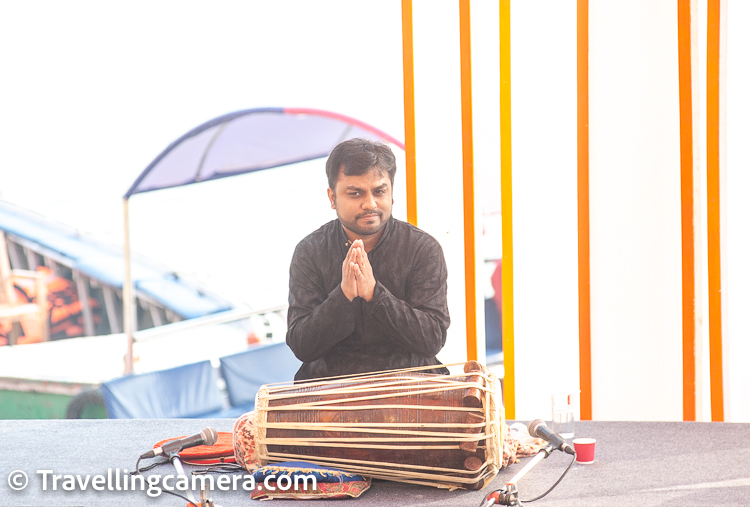Recently when we were in Benaras for Mahindra Kabira Festival, we also got a chance to experience Ashish Kumar Jaiswal's performance and through this blogpost we will share about the same.
Ashish Kumar Jaiswal is a promising young vocalist of ‘Dagar Bani' of Dhrupad and an accomplished vocalist of ‘Charpat ki Gayaki’ of Benares Gharana. He is a disciple of Pandit Ritwik Sanyal, an eminent exponent of Dhrupad for many years. Ashish has also honed his musical skills under the guidance of Pt. Anup Mishra, a noted vocalist of the Benares Gharana. Ashish understands Varanasi’s traditional gayaki and has excelled in khyal and semi-classical genres of music. Ashish had already established himself as a khyal vocalist, when he got the opportunity to learn Dhrupad from Pt. Ritwik Sanyal. He is a graded artist of All India Radio and has performed at reputed concerts and festivals all over India. A versatile singer, gifted with a naturally beautiful voice, Ashish holds a Master’s degree in music with a Gold Medal from BHU.
Dr. Ankit Parikh is a talented pakhawaj artist who learnt the pakhawaj under Goswami Sri Kalyan Rai Maharaj Shri , the acharya of Vallabh Sampraday and vidwan of the Nana Panse Gharana. He took further talim from Dr. Raj Khushiram, disciple of pakhawaj whiz Swami Pagal Das Ji. Ankit is not just an excellent solo artist but a well-known accompanist as well and has performed all over India with both veteran and young musicians and been much appreciated for his performances. He has performed with renowned artistes like Pt. Ritwik Sanyal, Pt. Gundecha brothers, Ustad Wasifuddin Dagar, Pt. Nirmalya Dey, Ustad Bahauddin Dagar, and others. Ankit has been felicitated with the Junior Research Fellowship Award 2019 by the Ministry of Culture and holds a doctorate degree in pakhawaj from Banaras Hindu University.
Music is worship or aradhana and not pure entertainment. It is a journey of sound for the unseen which takes you into a state of joy. Dhrupad has the oldest living tradition of Indian classical music whose origin dates back to the Sama Veda. The birth of Dhrupad as we know it today coincided with the Bhakti movement. This then evolved into a sophisticated classical form of music and in the 1500s came to be patronised by the royal courts.
The first part of the performance is a skilful unfolding of the raga in an elaborated alaap which is meditative. This slow and deliberate melodic development gradually introduces a rhythmic pulse and slowly increases in pace. The second part of the performance is the composition 'pada' in which the vocalist and the pakhawaj player improvise together to create an aesthetically rich experience.
Related Blogposts -



















.jpg)
Comments